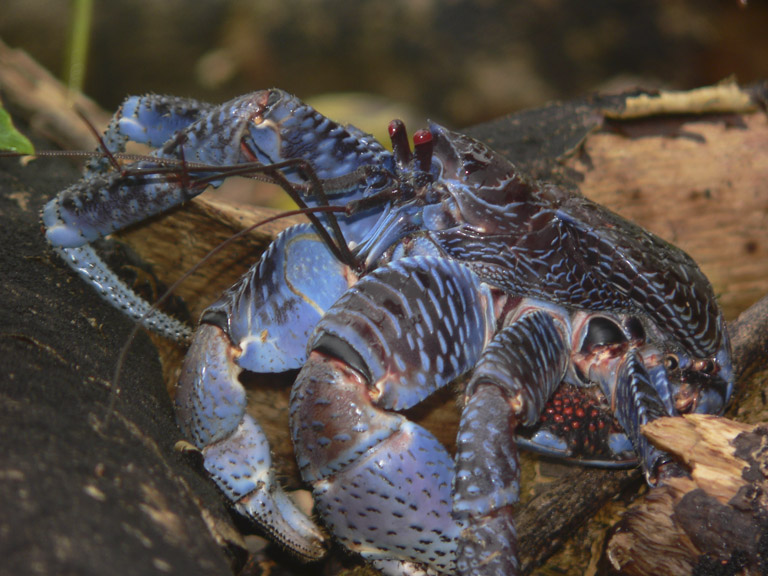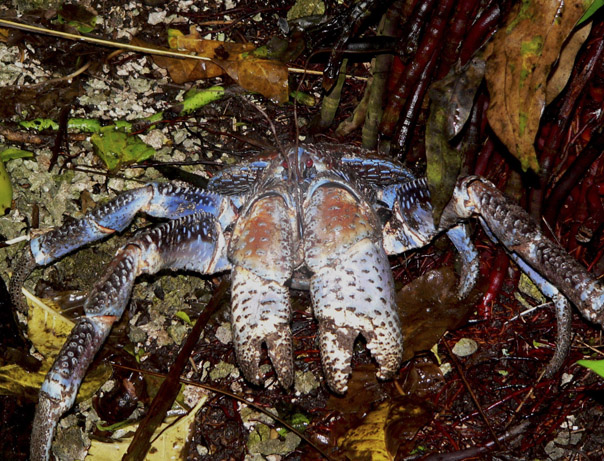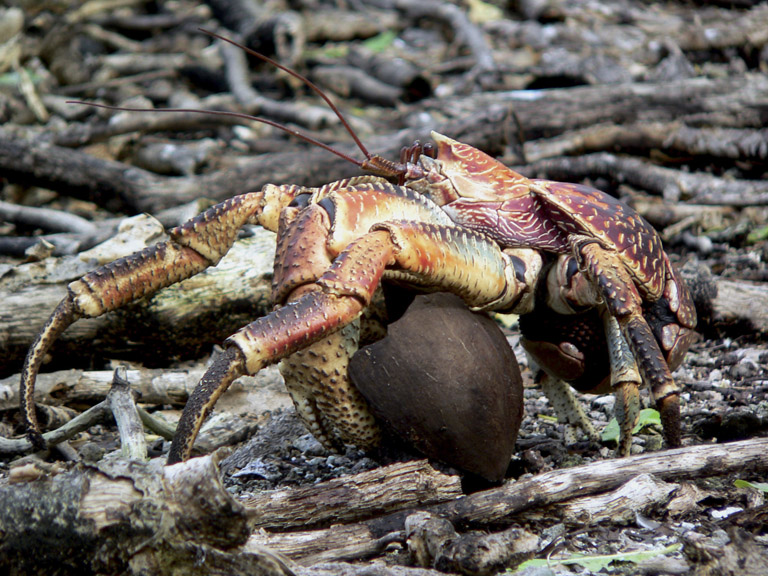Published in the Ocean Watch column, Honolulu Star-Advertiser © Susan Scott
January 5, 2015
Coconut crabs got a lot of attention recently when residents found one walking down Salt Lake Boulevard. A thoughtful person coaxed the non-native animal into a box and notified authorities. When news of this got out, the crab became a celebrity.
As it should. But not because of the sensational reporting, which made the crab sound like the spawn of Godzilla whose presence in Hawaii was a plot toward world domination. No, the coconut crab deserves publicity because it’s a magnificent creature that urgently needs international protection.
 This coconut crab was photographed south of Hawaii on Palmyra.
This coconut crab was photographed south of Hawaii on Palmyra.
©2015 Susan Scott
On Palmyra Atoll I fell in love with coconut crabs after helping weigh and measure them. The crabs are protected there, but lack of data prevents the overhunted species from being officially listed as endangered.
The coconut crab is a land crab, but its survival depends on the sea. After mating, the female carries her eggs tucked under her folded abdomen until they’re ready to hatch. She then walks to the shore and drops her tiny offspring into the ocean.
After three to six weeks adrift, the lucky survivors, being of the hermit crab family, look for snail shells to call home. Two years later the crabs have outgrown all seashells and spend the rest of their long lives, up to 60 years, naked.

Such exposure leaves the hermit crab vulnerable to dehydration, making a high-humidity environment crucial to its survival. As natives of the steamy rain forests of certain tropical islands in the Pacific and Indian Oceans, coconut crabs cannot live in Hawaii’s relatively cool, dry climate.
Coconut crabs come in a rainbow of stunning colors arranged in dots, spots, bars and blotches. With two red stalked eyes, four waving antennae and eight gangly walking legs, the crabs look like a cross between a spider and a lobster. This makes the animals creepy to some but beautiful to those of us who admire nature’s amazing designs.

Part of the coconut crab’s fame is its two big front claws, which generate silly headlines like “Coconut crabs ate Amelia Earhart!” But those mismatched pincers have practical functions. One claw strips husks off green coconuts; the other cuts into the hard inner shell. Even with such efficient tools, it takes a mature crab 24 hours to get to the center of a coconut.
No one knows who brought the 4-pound crab (they grow to 8) to Hawaii, or why it was wandering down a city street, but it’s in good hands now with a coconut crab expert guiding its care.
After being kidnapped, chilled, desiccated and deserted, and then portrayed as a vicious monster, I hope our unwilling visitor is treated to a big bag of shredded coconut.